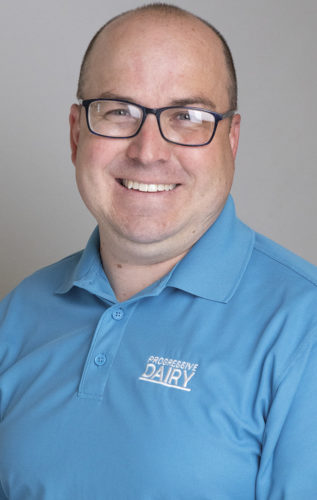A group of Midwestern dairy producers recently visited Idaho to tour a few dairies and invited me to speak to their group about the history of the state’s dairy industry and my thoughts about its future.
I don’t do speaking engagements very often, but their request for a 15-minute presentation seemed feasible.I knew I had the idea I wanted to talk to them about in August after our company meeting.
You may recall from last issue that our company team-building activity was to experience Twin Falls’ zip line.
We departed from the training base and took a brief tour through the Clear Lakes area at the bottom of the Snake River Canyon prior to riding the zip lines.
The tour guide indicated that the site was at one time the estate of Ira Burton Perrine. He told us of Perrine’s fame for planting fruit trees and winning awards at shows as far away as the Paris Exposition. The guide also said that Perrine was a dairyman with a small herd of dairy cattle.
The fact that the present No. 14 and No. 15 U.S. dairy counties (Twin Falls and Jerome) had such a deep dairy history intrigued me. I picked up a copy of “Bucking the Tide,” a story of the development of Idaho’s Magic Valley, to confirm the story.
Sure enough, according to the book’s author, H.J. Kingsbury, Perrine came to Idaho in 1883 to work in the mines near present-day Sun Valley, Idaho. Agriculture was embedded in Perrine’s heritage.
As a boy, he had milked six cows every morning on his parent’s farm in Indiana. After a thief stole all of the money he had earned and saved for a few weeks from his pocket, he gave up mining.
Soon thereafter he purchased a herd of 20 cows and started selling fresh milk to the miners.
Perrine found the farm we passed through on our tour while he was looking for pasture for his dairy cattle. The operator of a tent city near Shoshone Falls, known as the Niagara Falls of the West, told Perrine that “a few miles farther down the Snake River Canyon there was plenty of pasture and also two lakes which never froze up.”
Perrine settled on the spot and turned it into a verdant farm with thousands of fruit and nut trees in several dozen varieties.
Fittingly when the present structure that connects Jerome and Twin Falls counties was finished in 1976 (photo above), it was named after the dairy farmer who settled the land that stretches out in plain view to the west of the I.B. Perrine Bridge.
How far back can you trace your dairy community’s roots? Discovering stories like the one we heard on our company tour could be a good way to help you connect with other members of your community.
Helping them see that you’re not the newest kid on the block and are a part of the area’s heritage will likely build good will you can lean on in the future. PD
Photo by Mike Dixon.

-
Walt Cooley
- Editor-in-chief
- Progressive Dairyman
- Email Cooley




